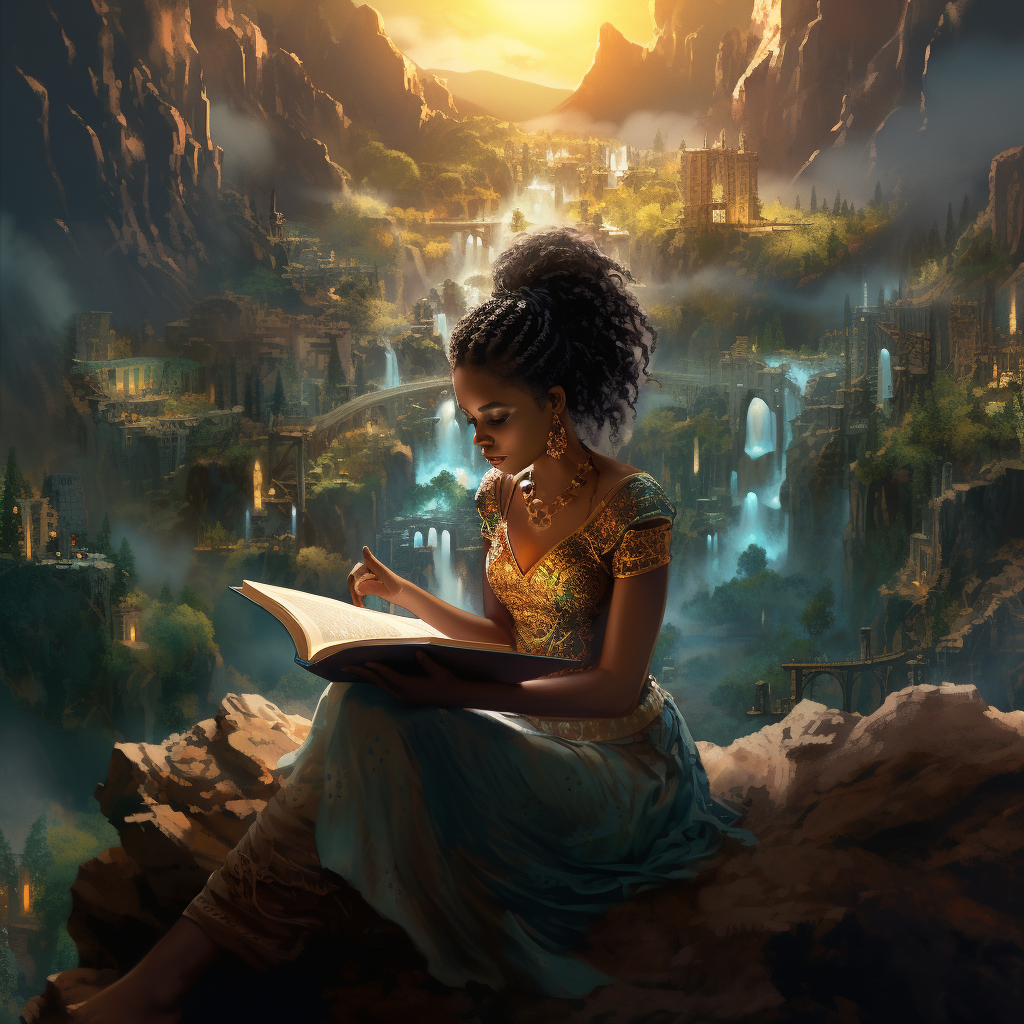Welcome to A Year of Writing, a podcast about productivity, marketing and writing. Are you looking for ways to craft compelling stories? Then you’ve come to the right place. My name is Natalie and I am your host. Today we’ll be deep diving into the world of storybuilding, plotting and characters. It doesn’t matter if you just starting out as a writer or if you’ve been around for some time. Either way, you’re going to gain some valuable tools that will help you take your story to the next level.
We’re going to kick things off by talking about worldbuilding. Creating a rich and immersing world is essential, no matter if you’re writing fantasy, futuristic Sci-Fi, or contemporary romance. Worldbuilding not only sets the stage for the story, it also helps engage your readers and bring your story to life. So where should you start as a writer when it comes to worldbuilding?
If we flip it and look at it from the reader’s perspective, the reader only sees about ten percent of the world that the author has created. But it’s still really important that you, as the author, know the laws and boundaries of the world that the story is set in. When it comes to worldbuilding, the first step is to create rules for your world.
- What what are the natural laws?
- What’s the culture like?
- What are the physical laws?
- Does magic exist or not?
When it comes to worldbuilding, you’re the creator, have to be really consequential when it comes to all of this. So if you say that the water is yellow, the water should be yellow no matter what. And it’s important to remember these things. There are social aspects to worldbuilding too. Is it a magical world with its own set of laws? Does it have unique species and races? And you have to consider how this will impact your characters in your plot.
If you have a magical system, you have to decide if it’s a soft or a hard magical system. A soft magical system is like the one in the Harry Potter series. It doesn’t have that many predefined rules and everyone that witch can perform magic. There are no specific boundaries and things just unfold with the plot, basically.
In the fantasy series that I’m writing, The Forbidden Circle, I have chosen hard magic. That means that there are specific rules that I have to follow. And depending on what the characters do, you can predict what will happen because the same thing always happens. And I have a magical system with elemental magic. There are magicians that are blessed with water magic, with fire magic and so forth. I’m not going to tell you everything because it’s still my work in progress.

What I usually do with world building is that I create a freeform canvas with like inspirational photos where I put down the laws and how the magic system works and everything like that, so that I can go back later and look at it. I also do this when I write contemporary fiction. As you may know, I’m writing a romance novel right now. And even there when it is set in this world, I still save photos of the places that my character visits and stuff like that. It’s a really good advice just to keep track of everything. And also, so if you write a series, it’s very important that you know that what you like what you said in the first book still have to apply in later books. That’s very important.
I also know that some people tend to almost get stuck in world building. So remember that the world building is supposed to be like backdrop. It’s supposed to support your story. It’s not supposed to be the story in itself. So just remember to keep a balance between the world and what happens to the characters and the plot.
Speaking of characters, let’s move on to them. Characters are at the heart of the story. That’s what really matters. That’s what drives the entire story forward. So creating three dimensional characters that we can relate to is super important. And how do you create well rounded characters?
Well, the first step to developing well rounded characters is to get to know your characters better. So how do you get to know them more deeply? What drives them? What are their fears? What are their strengths? What are their weaknesses? And what are their dreams? What do they dream of? What do they want in life? You also need to understand their past experiences and their motivations. The more you as an author know your characters, the more three dimensional and relatable the characters will seem to the reader.
One of the most important things when it comes to characters and character development through out the book is the inner conflict. If you want to learn more about how to create a character with an inner conflict, you should watch Abby Emmons videos. I’ll link one of them in the show notes, the description box. She’s great at explaining how to create good characters. I’ve learned so much from her.
And now that you have your main character in place, how can you plan your story efficiently? Planning a story involves finding the right balance between spontaneity and structure. And here we’re different. So some writers prefer having a super detailed outline, and some writers prefer a more flexible approach, like the pantsing method. No matter what kind of method that you prefer, it’s important for you to have a basic outline with a starting point and an endpoint. You should also to have the crucial plot points in order. Because if you don’t know plot turns, then you will have to do a lot of editing and that’s no fun at all. So having those structural parts, those basic parts in place before you start writing is really great. And it also will prevent you from ending up getting writer’s block, because you know where the story is heading.
Remember, there’s no one size fits all when it comes to planning, so experiment with different methods until you know what works for you. The key is for you to have a roadmap that guides you while allowing room for creativity and surprises. And I think I talked about this in the first episode, but I used to be a pantser, like all in pantser, but now I feel like I have evolved into more of a planner, I guess.
I started with a basic outline, and then I wrote down the plot points. Then I actually started writing down what was going to happen in each chapter. And this has really helped me because I’m on a really tight deadline right now with the project I’m working on. It has helped me to know what’s coming, and I think it made the story a lot better.
For starters, I don’t need to edit as much. Like, with one of the manuscripts that I pants my way through, I have come to the conclusion that I will probably uproot the entire project and start from scratch. I think I’m going to redo the whole thing. I’ve written two books… the first draft of two books, and I think I’m going to take some things from them, but I’m going to outline the entire series and rewrite the whole thing because that way it will be a lot better. And I can plant seeds, like, what will happen in book five – there will be cumbs and details in book one that. If I only pantsed my way through it, I won’t be able to do that.
So it was a book that really inspired me when it comes to this is: The Fourth Wing by Rebecca Yarros. I love that book and be so great at creating this tension, creating this suspense, and I want to do that too. But I can also tell that she has been planning things ahead and she has been thinking about the character arcs and stuff like that throughout the entire series. My guess is that she did not just pants her way through.

So remember, there’s no one size fits all when it comes to planning. My recommendation is for you to experiment your way through it and find what fits you. And also keep on doing this throughout your writing career because you may evolve and you may change. Like what you like today may not be what you like tomorrow. Or if you write in different genre, maybe something else works.
Before we wrap up, let’s share some final tips. First and foremost, don’t be afraid to revise and iterate writing is a process, and the first draft does not have to be and will not be perfect. And embrace critique from beta readers and editors. They only want your manuscript to improve.
Additionally, read widely and study other writers techniques and tricks. What can you learn from them? Analyze what works with them, and take those lessons into your own writing. Remember that storytelling is a craft that you have to keep on learning. You will never be fully educated.
And finally, always stay true to your unique voice and vision. Don’t try to mimic someone else’s style or follow trends blindly, because the most compelling stories come from genuine people that just want to tell that story and are passionate comes from passionate storytellers.
That’s it for today’s episode. I hope that you enjoyed this episode on World Building Characters and Planning. Remember that writing is a journey and each step takes you closer to achieving your storytelling goals. If you enjoy this episode, be sure to subscribe and leave a review. Stay tuned for more valuable tips and episodes that will help you on your writing journey. Thank you so much for joining me today. Remember to keep writing. Keep telling those stories. Bye.




